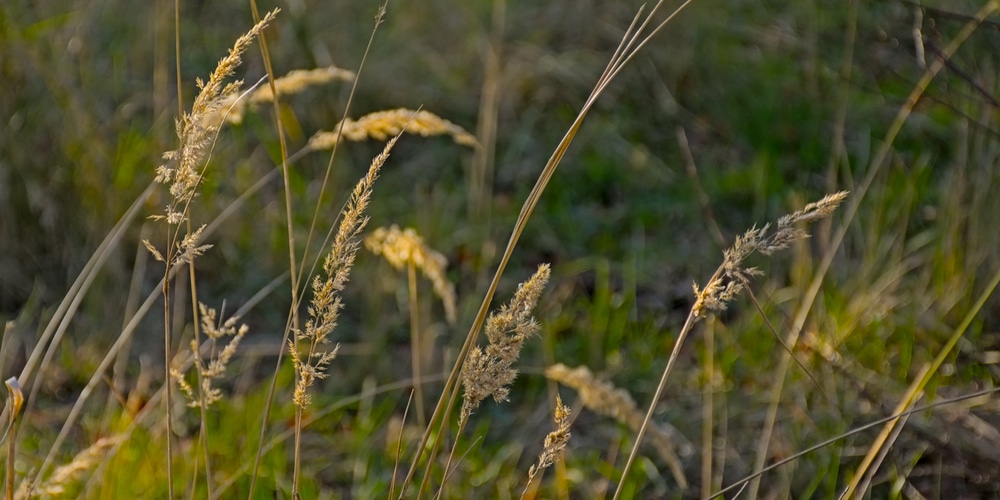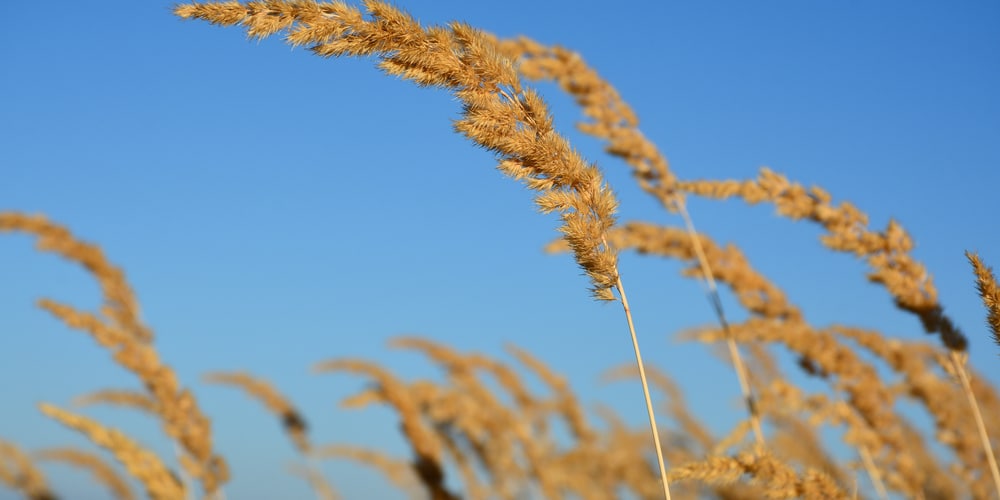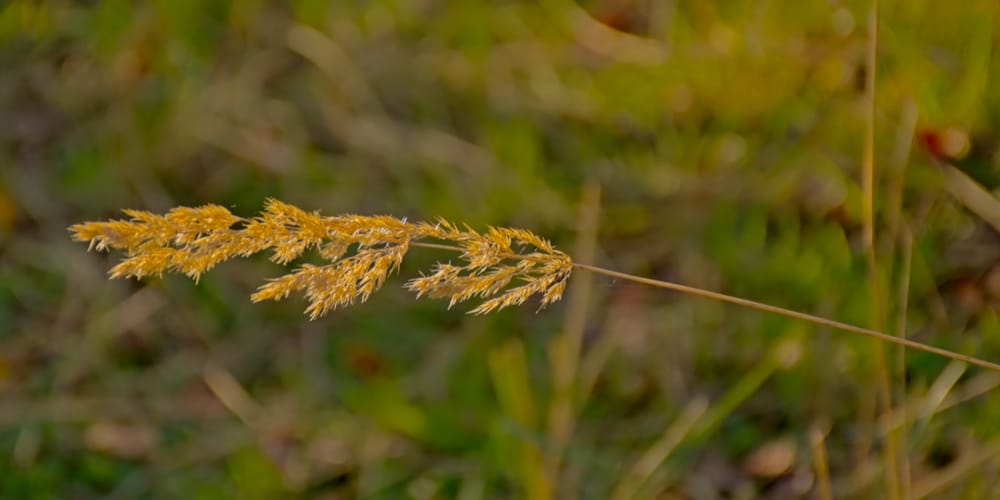Rising from the barren earth like a carpet of green velvet, prairie junegrass (or June grass) is a hardy and drought-resistant grass that thrives in the central United States.
This versatile grass can be used for livestock grazing, hay production, and as an ornamental groundcover.
Prairie junegrass is also a valuable songbird habitat, providing food and shelter for these feathered creatures. With its striking color and resilience, prairie junegrass is a beautiful addition to any landscape.

| Botanical Name | Koeleria Macrantha |
| Common Name | Junegrass, Prairie Junegrass, Prairie Koeler’s Grass |
| Plant Type | Perennial |
| Flower Color | Yellow to brown/tan, with a greenish hue |
| Size When Mature | 12-36 inches |
| Bloom Time | Early Spring |
| Sun Requirements | Full sun / Tolerates partial shade |
| USDA Hardiness Zones | 3-9 |
| Soil PH Range | 6.5-8.0 |
| Soil Type | Medium to dry, sandy to loamy, well-drained |
| Water Needs | Medium |
| Native Area | Great Plains of North America |
What You Need to Know About June Grass
One of the most predominant types of grasses you can find outside is June grass. This short, fibrous grass is one of the most essential components of the prairie ecosystem. They are typically found in open forestlands, plains, and meadows.
June grasses are low-growing with narrow blades that spread horizontally across the ground like a carpet of green velvet. This grass typically blooms between late April and early June (thus its name), but the timing of its growth cycle depends on the climate.
In cooler temperatures, June grass may not appear until mid-summer. This grass is an excellent forage for cattle and other grazing animals. Additionally, it is also used as a soil stabilization agent to prevent erosion on hillsides.
With yellow flowers that turn to tan as they mature, this grass belongs to the Poaceae family. It is a perennial, meaning it will regrow year after year from its root system.
Once established, June grass is very drought tolerant. This plant grows in various habitats, including open woods, fields, and roadsides. It prefers full sun but can tolerate some shade.
Overall, prairie junegrass is a hardy, adaptable type of grass that requires little maintenance once it is established. It is an excellent choice for anyone interested in adding a splash of color and texture to their landscape. With its myriad uses, June grass makes a fantastic addition to any garden or meadow.
How to Care for June Grass
If you’re interested in adding June grass to your landscape, here’s everything you need to know about growing and caring for a thriving Prairie junegrass.
Light
Contrary to its name, June grass is a hardy, versatile plant that can thrive in various seasons and conditions. The first step to caring for June grass is ensuring that it gets enough light.
This means choosing a planting site with partial or full sunlight, depending on your climate and the height of the growth you prefer. June loves full sun, but it can also grow happily in partial shade.
A lush, healthy June grass lawn requires about six hours of sunlight per day. If you live in a cooler climate, your June grass may not start growing until mid-summer. In this case, choose a planting site that receives full sun during the longest days of the year.
Water and Soil Needs
This hardy grass is drought-tolerant and does best in well-drained soil. However, it will need regular watering during its first growing season to establish a strong root system.
Once established, Prairie Junegrass is relatively low-maintenance and only needs occasional watering. In terms of soil, this grass thrives in sandy or sandy loam soils with a neutral to alkaline pH.
Temperature Requirements
Prairie Junegrass flourishes in the temperate regions of North America. The average temperature for this grass is between 70-and 80 degrees Fahrenheit. Commonly seen and thriving in USDA zones 3 through 9, June grass is also cold-hardy, making it an excellent choice for northern regions.
Fertilizer
One of the best things about this plant is that it survives and thrives even in poor-quality soils. However, if you want to give your June grass a little boost, applying a layer of compost or organic fertilizer in the spring can help promote growth.
Since this grass grows extremely well in loamy and sandy nutrient-rich soils, it is not necessary to apply fertilizer unless you are trying to encourage a specific growth pattern.
Common Diseases
Although June grass is fairly resistant to pests and diseases, it can occasionally fall victim to harmful fungi such as rust or smut. To prevent these problems, avoid over-watering your plants or irrigating the leaves of the plant directly. You can prevent this by using a soaker hose or drip irrigation system.
Additionally, June grass is not particularly susceptible to pests, but it can occasionally be bothered by aphids, mites, or grasshoppers. These pests are usually more of a problem in cool, damp weather. If you notice any damage to your plants, treat them with an insecticidal soap or neem oil solution.
June Grass Propagation
When it comes to propagating prairie junegrass, there are two main methods: seed or rhizome. Seed propagation is the most common method, and it’s pretty straightforward: simply sow the seeds in well-drained soil and water regularly.
Rhizome propagation is a bit more involved, but it’s well worth the effort. To propagate by rhizome, first find a healthy plant with long, thick roots. Cut off a section of the root (making sure to include at least one bud) and plant it in a pot of moistened soil. Keep the soil moist and give the plant plenty of sunlight; soon, you’ll see new shoots emerging from the soil.
June Grass: Final Thoughts
Prairie junegrass is a beautiful grass that adds interest and charm to any landscape. With its unique blue-green blades, it is sure to stand out in any garden.
Although it is native to the prairies of North America, prairie junegrass is easily adapted to other climates and soil types. Prairie junegrass care is relatively simple, and with a little attention, this grass will thrive in nearly any setting.
When it comes to prairie junegrass care, the most important thing to remember is to water regularly. This grass prefers moist soil, so be sure to water deeply and frequently during the hot summer months.
Mowing is not necessary for this grass, but if you do mow, be sure to set the blade high to avoid damaging the blades.
Related Article: Colorado Native Grasses

